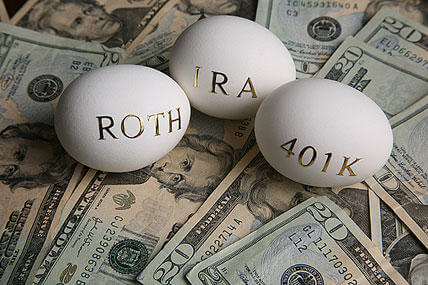If you're ready to start saving for your future using an IRA, you're not alone. According to the Investment Company Institute, Americans hold more than $5 trillion in IRAs.
Some people have the misconception that an IRA is an investment, same as a certificate of deposit or a mutual fund. In reality, it's a tax-deferred account that gives you the flexibility to choose the types of products you put in it, such as mutual funds, annuities, stocks, bonds, certificates of deposit and money market accounts.
You also can use IRAs to take direct control of money that's held for you in retirement plans at former employers. Using what's known as an IRA rollover, you can move that money into an IRA, usually with additional investment options.
1. Traditional IRAs
Most people younger than 70½ with earned income can contribute to a traditional IRA. Depending on your income and whether you're covered by a retirement plan at work, you may be able to deduct all or part of what you contribute. Regardless of whether you take a deduction, you won't owe any taxes on the growth of your account until you start making withdrawals.
With a few exceptions, withdrawals before age 59½ are subject to income taxes and an additional 10% penalty.
2. Roth IRAs
A Roth IRA turns the tax advantages of a traditional IRA on its head: There's no deduction for contributions, but qualified withdrawals of earnings after age 59½ are tax-free.
You also can withdraw your contributions any time without paying taxes or a penalty. While you can only contribute to a Roth if your income is below certain limits, anyone can move money from a traditional IRA into a Roth through a process called conversion.
3. SEP IRAs
Self-employed individuals and business owners can open Simplified Employee Pension IRAs, or SEP-IRAs. Easy to establish and maintain, a SEP is a much simpler alternative to a 401(k) or a pension plan. One of the most attractive features of a SEP is its generous contribution limit.
4. SIMPLE IRAs
Available to businesses with 100 or fewer employees, a SIMPLE IRA, or Savings Incentive Match Plan for Employees, allows for both employer and employee contributions. If you have employees, a SIMPLE requires you to either match their contributions dollar for dollar up to 3% of their salary, or contribute a fixed amount equal to 2% of their income even if they don't chip in any of their own money.
Contribution Limits
| Younger than 50 | 50 and Older | |
|---|---|---|
| Traditional and Roth | 2012: $5,000 2013: $5,500 |
2012: $6,000 2013: $6,500 |
| SEP | 2012: $50,000 or 25% of compensation,* whichever is less 2013: $51,000 or 25% of compensation,* whichever is less |
Same as younger than 50 |
| SIMPLE | 2012: $11,500 2013: $12,000 |
2012: $14,000 2013: $14,500 |




